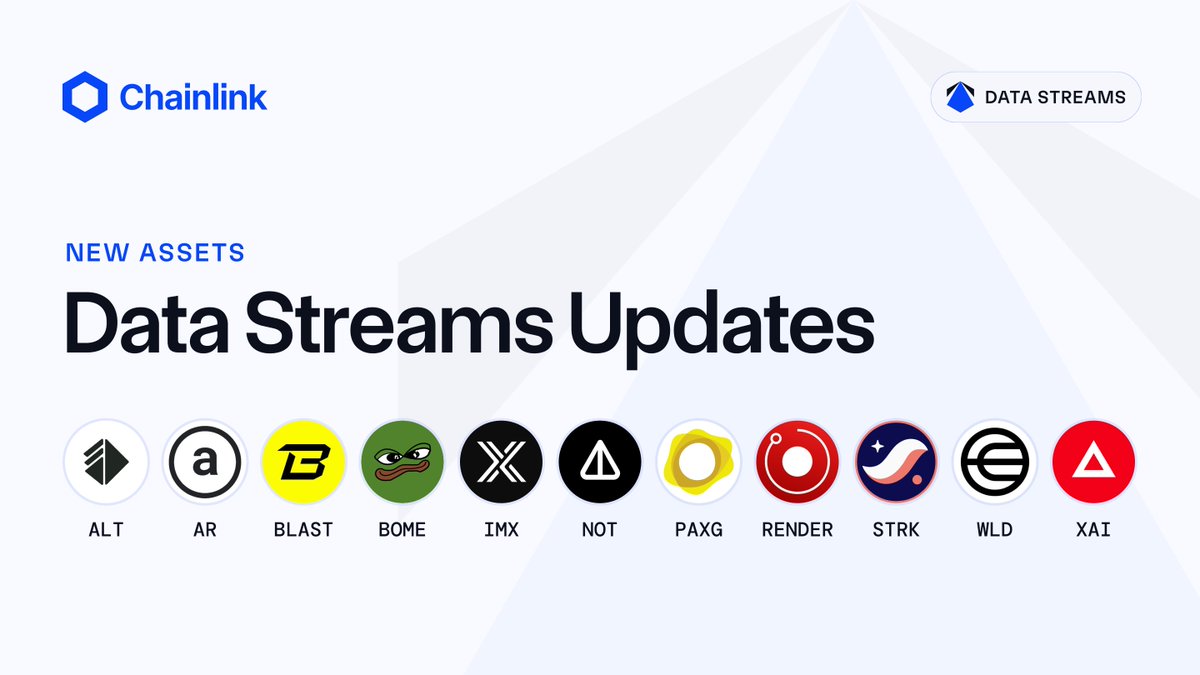
WLD
Worldcoin 价格
$1.0812
-$0.08190
(-7.05%)
过去 24 小时的价格变化

您感觉 WLD 今天会涨还是会跌?
您可以通过点赞或点踩来分享对该币种今天的涨跌预测
投票并查看结果
免责声明
本页面的社交内容 (包括由 LunarCrush 提供支持的推文和社交统计数据) 均来自第三方,并按“原样”提供,仅供参考。本文内容不代表对任何数字货币或投资的认可或推荐,也未获得欧易授权或撰写,也不代表我们的观点。我们不保证所显示的用户生成内容的准确性或可靠性。本文不应被解释为财务或投资建议。在做出投资决策之前,评估您的投资经验、财务状况、投资目标和风险承受能力并咨询独立财务顾问至关重要。过去的表现并不代表未来的结果。您的投资价值可能会波动,您可能无法收回您投资的金额。您对自己的投资选择自行承担全部责任,我们对因使用本信息而造成的任何损失或损害不承担任何责任。提供外部网站链接是为了用户方便,并不意味着对其内容的认可或控制。
请参阅我们的 使用条款 和 风险警告,了解更多详情。通过使用第三方网站(“第三方网站”),您同意对第三方网站的任何使用均受第三方网站条款的约束和管辖。除非书面明确说明,否则欧易及其关联方(“OKX”)与第三方网站的所有者或运营商没有任何关联。您同意欧易对您使用第三方网站而产生的任何损失、损害和任何其他后果不承担任何责任。请注意,使用第三方网站可能会导致您的资产损失或贬值。本产品可能无法在所有司法管辖区提供或适用。
请参阅我们的 使用条款 和 风险警告,了解更多详情。通过使用第三方网站(“第三方网站”),您同意对第三方网站的任何使用均受第三方网站条款的约束和管辖。除非书面明确说明,否则欧易及其关联方(“OKX”)与第三方网站的所有者或运营商没有任何关联。您同意欧易对您使用第三方网站而产生的任何损失、损害和任何其他后果不承担任何责任。请注意,使用第三方网站可能会导致您的资产损失或贬值。本产品可能无法在所有司法管辖区提供或适用。
Worldcoin 市场信息
市值
市值是通过流通总应量与最新价格相乘进行计算。市值 = 当前流通量 × 最新价
流通总量
目前该代币在市场流通的数量
市值排行
该资产的市值排名
历史最高价
该代币在交易历史中的最高价格
历史最低价
该代币在交易历史中的最低价格
24 小时最高
$1.1857
24 小时最低
$1.0590
历史最高价
$11.9650
-90.97% (-$10.8838)
最后更新日期:2024年3月10日
历史最低价
$0.20000
+440.59% (+$0.88120)
最后更新日期:2023年7月24日
Worldcoin 动态资讯
以下内容源自 。

Oba
PI创始人参与加密大会consensus2025结束后,我有一些个人看法:
首先一个问题,为什么PI创始人尼古拉斯被安排在AI小组中?
我的看法是在这次大会中,尼古拉斯已经说出了PI到底是什么东西,在我看来,PI根本不是单纯在做手机挖矿。他在解决BTC无法融入现实国家的问题。现在非常明显的BTC再如何的自主经济自由,都无法凌驾于政府之上。
以简单的方式来说,PI在做一个全币圈的政府行政部门基础建设,作为币圈全网的身份验证,实际上的去中心化,是去除人为管理,转为中心化AI管理,让币圈无政府状态真正变成有管理者,而管理者就是AI。这样就能完全的透明、公开、可查询的合规性,而不是自己认为自己关注地方的透明而已。
你的私房钱现金可以对你老婆透明,但你在外面的小三有等同透明吗?并不是你认为的透明只是金钱,而是全部。
承上,「重点」目前已经可知道,PI超越的一个项目,就是WLD。奥特曼还做不成的事情,已经被尼古拉斯完成了,而且所有人都有代币,所有人都在做真正的KYC。WLD被怀疑偷身份,而PI不会,因为PI做的是去中心化KYC,由AI管理,所以他提到了转头人脸验证。
重点:
1.你无法卖掉你的身份,你卖掉的是你努力工作获得的PI。与WLD不同。
2.你无法盗用他人的身份,你的身份在虚拟币圈上,永远是你,你必须自主守护自己身份的价值。
我认为consensus大会在PI上的重点凸显,PI在做crypto store,基于与APPLE一样的真实身份进入币圈的重要基础建设。你想参与币圈,你就必须建立自己真实的身份,而不是虚拟。更不是任何项目先做出东西后,才在想方法东补西补KYC,却永远会发生虚假KYC的问题。PI完全解决这个问题,并且从多年前尼古拉斯就表明身份合规。
其次,对于价格面来说,如何看待价格,价格对我来说,是一种人的行为的问题,大多人希望的价格上涨,是来自于大量未启用的流动性,一旦启用时,价格直接高高挂,这是系统性定价的关键。
至于短线能否炒作压低价格,当然也可以,只要你有足够的炒作专业能力,要欺骗短期投机者,都是自由的。然而价格最终依然是系统性制定,鲸鱼不论如何炒作,都不影响最终去中心化后的价格制定。
所以短线上,当我看见有鲸鱼想要炒作打压价格时,我就会提前公告鲸鱼打压的时间。
大多人总是使用价格来看待所有事情,可以这样做吗?
那请问,当夫妻吵架时会摔东西,而要判断会吵多久,如果有分析师跟你说,他只要在摔一台价格一万的电脑,就不吵了。你会不会说这分析师是XX?如果吵架会先评估摔东西的价值,那还会吵吗?那么如果摔的是别人手上的西瓜,如何定价?
可能会说,怎会拿吵架举例。
这是因为,你不认为主力炒作是在炒作韭菜情绪,并且建立一堆技术来试图让你做没意义的分析,实际上炒作者都知道搞的就是你心态。而你还在用数字计算你老婆为何生气。相信我,你绝对没物理学家霍金专业,他研究计算一辈子觉得最复杂的就是女人心。
同样的,我在凌晨有看到PCT上午会发布公告,也确实上午七点发布了,与之前相同,一旦我看到有要发布,当天上午就有发布公告。
虽然这个公告几乎没作用也等同于没发一样,但他确实公告了。
#PI
#BTC
#consensus2025
查看原文

1.04万
8

AltLayer
在一年内支持资产数量激增超过700% - @chainlink 的数据流正在设定新的标准 - 现在 $ALT 已加入名单!
更智能、更快速、低延迟的数据流 = 为使用 AltLayer 基础设施的汇总构建者带来巨大解锁。看涨情绪满满!

Chainlink
#Chainlink 数据流支持的新资产 ↓
ALT - @alt_layer
AR - @ArweaveEco
BLAST - @blast
BOME - Book of Meme
IMX - @Immutable
NOT - @thenotcoin
PAXG - @Paxos
RENDER - @rendernetwork
STRK - @Starknet
WLD - @worldcoin
XAI - @XAI_GAMES

1.04万
43

AltLayer
在一年内支持资产数量激增超过700% - @chainlink 的数据流正在设定新的标准 - 现在 $ALT 已加入名单!
更智能、更快速、低延迟的数据流 = 为使用 AltLayer 基础设施的汇总构建者带来巨大解锁。看涨情绪满满!

Chainlink
#Chainlink 数据流支持的新资产 ↓
ALT - @alt_layer
AR - @ArweaveEco
BLAST - @blast
BOME - Book of Meme
IMX - @Immutable
NOT - @thenotcoin
PAXG - @Paxos
RENDER - @rendernetwork
STRK - @Starknet
WLD - @worldcoin
XAI - @XAI_GAMES

6,438
0
WLD 计算器


Worldcoin 价格表现 (美元)
Worldcoin 当前价格为 $1.0812。Worldcoin 的价格在过去 24 小时内下跌了 -7.04%。目前,Worldcoin 市值排名为第 0 名,实时市值为 $16.08亿,流通供应量为 1,496,255,048 WLD,最大供应量为 10,000,000,000 WLD。我们会实时更新 Worldcoin/USD 的价格。
今日
-$0.08190
-7.05%
7 天
-$0.10300
-8.70%
30 天
+$0.38150
+54.52%
3 个月
-$0.13880
-11.38%
关于 Worldcoin (WLD)
此评级是欧易从不同来源收集的汇总评级,仅供一般参考。欧易不保证评级的质量或准确性。欧易无意提供 (i) 投资建议或推荐;(ii) 购买、出售或持有数字资产的要约或招揽;(iii) 财务、会计、法律或税务建议。包括稳定币和 NFT 的数字资产容易受到市场波动的影响,风险较高,波动较大,可能会贬值甚至变得一文不值。数字资产的价格和性能不受保证,且可能会发生变化,恕不另行通知。您的数字资产不受潜在损失保险的保障。 历史回报并不代表未来回报。欧易不保证任何回报、本金或利息的偿还。欧易不提供投资或资产建议。您应该根据自身的财务状况仔细考虑交易或持有数字资产是否适合您。具体情况请咨询您的专业法务、税务或投资人士。
展开更多
- 官网
- 白皮书
- 区块浏览器
关于第三方网站
关于第三方网站
通过使用第三方网站(“第三方网站”),您同意对第三方网站的任何使用均受第三方网站条款的约束和管辖。除非书面明确说明,否则 OKX 及其关联方(“OKX”)与第三方网站的所有者或运营商没有任何关联。您同意 OKX 对您使用第三方网站而产生的任何损失、损害和任何其他后果不承担任何责任。请注意,使用第三方网站可能会导致您的资产损失或贬值。
Worldcoin 常见问题
Worldcoin 今天值多少钱?
目前,一个 Worldcoin 价值是 $1.0812。如果您想要了解 Worldcoin 价格走势与行情洞察,那么这里就是您的最佳选择。在欧易探索最新的 Worldcoin 图表,进行专业交易。
数字货币是什么?
数字货币,例如 Worldcoin 是在称为区块链的公共分类账上运行的数字资产。了解有关欧易上提供的数字货币和代币及其不同属性的更多信息,其中包括实时价格和实时图表。
数字货币是什么时候开始的?
由于 2008 年金融危机,人们对去中心化金融的兴趣激增。比特币作为去中心化网络上的安全数字资产提供了一种新颖的解决方案。从那时起,许多其他代币 (例如 Worldcoin) 也诞生了。
Worldcoin 的价格今天会涨吗?
查看 Worldcoin 价格预测页面,预测未来价格,帮助您设定价格目标。
ESG 披露
ESG (环境、社会和治理) 法规针对数字资产,旨在应对其环境影响 (如高能耗挖矿)、提升透明度,并确保合规的治理实践。使数字代币行业与更广泛的可持续发展和社会目标保持一致。这些法规鼓励遵循相关标准,以降低风险并提高数字资产的可信度。
资产详情
名称
OKcoin Europe LTD
相关法人机构识别编码
54930069NLWEIGLHXU42
代币名称
Worldcoin
共识机制
Worldcoin is present on the following networks: ethereum, optimism.
The Ethereum network uses a Proof-of-Stake Consensus Mechanism to validate new transactions on the blockchain. Core Components 1. Validators: Validators are responsible for proposing and validating new blocks. To become a validator, a user must deposit (stake) 32 ETH into a smart contract. This stake acts as collateral and can be slashed if the validator behaves dishonestly. 2. Beacon Chain: The Beacon Chain is the backbone of Ethereum 2.0. It coordinates the network of validators and manages the consensus protocol. It is responsible for creating new blocks, organizing validators into committees, and implementing the finality of blocks. Consensus Process 1. Block Proposal: Validators are chosen randomly to propose new blocks. This selection is based on a weighted random function (WRF), where the weight is determined by the amount of ETH staked. 2. Attestation: Validators not proposing a block participate in attestation. They attest to the validity of the proposed block by voting for it. Attestations are then aggregated to form a single proof of the block’s validity. 3. Committees: Validators are organized into committees to streamline the validation process. Each committee is responsible for validating blocks within a specific shard or the Beacon Chain itself. This ensures decentralization and security, as a smaller group of validators can quickly reach consensus. 4. Finality: Ethereum 2.0 uses a mechanism called Casper FFG (Friendly Finality Gadget) to achieve finality. Finality means that a block and its transactions are considered irreversible and confirmed. Validators vote on the finality of blocks, and once a supermajority is reached, the block is finalized. 5. Incentives and Penalties: Validators earn rewards for participating in the network, including proposing blocks and attesting to their validity. Conversely, validators can be penalized (slashed) for malicious behavior, such as double-signing or being offline for extended periods. This ensures honest participation and network security.
Optimism is a Layer 2 scaling solution for Ethereum that uses Optimistic Rollups to increase transaction throughput and reduce costs while inheriting the security of the Ethereum main chain. Core Components 1. Optimistic Rollups: Rollup Blocks: Transactions are batched into rollup blocks and processed off-chain. State Commitments: The state of these transactions is periodically committed to the Ethereum main chain. 2. Sequencers: Transaction Ordering: Sequencers are responsible for ordering transactions and creating batches. State Updates: Sequencers update the state of the rollup and submit these updates to the Ethereum main chain. Block Production: They construct and execute Layer 2 blocks, which are then posted to Ethereum. 3. Fraud Proofs: Assumption of Validity: Transactions are assumed to be valid by default. Challenge Period: A specific time window during which anyone can challenge a transaction by submitting a fraud proof. Dispute Resolution: If a transaction is challenged, an interactive verification game is played to determine its validity. If fraud is detected, the invalid state is rolled back, and the dishonest participant is penalized. Consensus Process 1. Transaction Submission: Users submit transactions to the sequencer, which orders them into batches. 2. Batch Processing: The sequencer processes these transactions off-chain, updating the Layer 2 state. 3. State Commitment: The updated state and the batch of transactions are periodically committed to the Ethereum main chain. This is done by posting the state root (a cryptographic hash representing the state) and transaction data as calldata on Ethereum. 4. Fraud Proofs and Challenges: Once a batch is posted, there is a challenge period during which anyone can submit a fraud proof if they believe a transaction is invalid. Interactive Verification: The dispute is resolved through an interactive verification game, which involves breaking down the transaction into smaller steps to identify the exact point of fraud. Rollbacks and Penalties: If fraud is proven, the batch is rolled back, and the dishonest actor loses their staked collateral as a penalty. 5. Finality: After the challenge period, if no fraud proof is submitted, the batch is considered final. This means the transactions are accepted as valid, and the state updates are permanent.
奖励机制与相应费用
Worldcoin is present on the following networks: ethereum, optimism.
Ethereum, particularly after transitioning to Ethereum 2.0 (Eth2), employs a Proof-of-Stake (PoS) consensus mechanism to secure its network. The incentives for validators and the fee structures play crucial roles in maintaining the security and efficiency of the blockchain. Incentive Mechanisms 1. Staking Rewards: Validator Rewards: Validators are essential to the PoS mechanism. They are responsible for proposing and validating new blocks. To participate, they must stake a minimum of 32 ETH. In return, they earn rewards for their contributions, which are paid out in ETH. These rewards are a combination of newly minted ETH and transaction fees from the blocks they validate. Reward Rate: The reward rate for validators is dynamic and depends on the total amount of ETH staked in the network. The more ETH staked, the lower the individual reward rate, and vice versa. This is designed to balance the network's security and the incentive to participate. 2. Transaction Fees: Base Fee: After the implementation of Ethereum Improvement Proposal (EIP) 1559, the transaction fee model changed to include a base fee that is burned (i.e., removed from circulation). This base fee adjusts dynamically based on network demand, aiming to stabilize transaction fees and reduce volatility. Priority Fee (Tip): Users can also include a priority fee (tip) to incentivize validators to include their transactions more quickly. This fee goes directly to the validators, providing them with an additional incentive to process transactions efficiently. 3. Penalties for Malicious Behavior: Slashing: Validators face penalties (slashing) if they engage in malicious behavior, such as double-signing or validating incorrect information. Slashing results in the loss of a portion of their staked ETH, discouraging bad actors and ensuring that validators act in the network's best interest. Inactivity Penalties: Validators also face penalties for prolonged inactivity. This ensures that validators remain active and engaged in maintaining the network's security and operation. Fees Applicable on the Ethereum Blockchain 1. Gas Fees: Calculation: Gas fees are calculated based on the computational complexity of transactions and smart contract executions. Each operation on the Ethereum Virtual Machine (EVM) has an associated gas cost. Dynamic Adjustment: The base fee introduced by EIP-1559 dynamically adjusts according to network congestion. When demand for block space is high, the base fee increases, and when demand is low, it decreases. 2. Smart Contract Fees: Deployment and Interaction: Deploying a smart contract on Ethereum involves paying gas fees proportional to the contract's complexity and size. Interacting with deployed smart contracts (e.g., executing functions, transferring tokens) also incurs gas fees. Optimizations: Developers are incentivized to optimize their smart contracts to minimize gas usage, making transactions more cost-effective for users. 3. Asset Transfer Fees: Token Transfers: Transferring ERC-20 or other token standards involves gas fees. These fees vary based on the token's contract implementation and the current network demand.
Optimism, an Ethereum Layer 2 scaling solution, uses Optimistic Rollups to increase transaction throughput and reduce costs while maintaining security and decentralization. Here's an in-depth look at the incentive mechanisms and applicable fees within the Optimism protocol: Incentive Mechanisms 1. Sequencers: Transaction Ordering: Sequencers are responsible for ordering and batching transactions off-chain. They play a critical role in maintaining the efficiency and speed of the network. Economic Incentives: Sequencers earn transaction fees from users. These fees incentivize sequencers to process transactions quickly and accurately. 2. Validators and Fraud Proofs: Assumption of Validity: In Optimistic Rollups, transactions are assumed to be valid by default. This allows for quick transaction finality. Challenge Mechanism: Validators (or anyone) can challenge the validity of a transaction by submitting a fraud proof during a specified challenge period. This mechanism ensures that invalid transactions are detected and reverted. Challenge Rewards: Successful challengers are rewarded for identifying and proving fraudulent transactions. This incentivizes participants to actively monitor the network for invalid transactions, thereby enhancing security. 3. Economic Penalties: Fraud Proof Penalties: If a sequencer includes an invalid transaction and it is successfully challenged, they face economic penalties, such as losing a portion of their staked collateral. This discourages dishonest behavior. Inactivity and Misbehavior: Validators and sequencers are also incentivized to remain active and behave correctly, as inactivity or misbehavior can lead to penalties and loss of rewards. Fees Applicable on the Optimism Layer 2 Protocol 1. Transaction Fees: Layer 2 Transaction Fees: Users pay fees for transactions processed on the Layer 2 network. These fees are generally lower than Ethereum mainnet fees due to the reduced computational load on the main chain. Cost Efficiency: By batching multiple transactions into a single batch, Optimism reduces the overall cost per transaction, making it more economical for users. 2. L1 Data Fees: Posting Batches to Ethereum: Periodically, the state updates from Layer 2 transactions are posted to the Ethereum mainnet as calldata. This involves a fee known as the L1 data fee, which covers the gas cost of publishing these state updates on Ethereum. Cost Sharing: The fixed costs of posting state updates to Ethereum are spread across multiple transactions within a batch, reducing the cost burden on individual transactions. 3. Smart Contract Fees: Execution Costs: Fees for deploying and interacting with smart contracts on Optimism are based on the computational resources required. This ensures that users are charged proportionally for the resources they consume.
信息披露时间段的开始日期
2024-04-20
信息披露时间段的结束日期
2025-04-20
能源报告
能源消耗
1519.84994 (kWh/a)
能源消耗来源与评估体系
The energy consumption of this asset is aggregated across multiple components:
To determine the energy consumption of a token, the energy consumption of the network(s) ethereum, optimism is calculated first. Based on the crypto asset's gas consumption per network, the share of the total consumption of the respective network that is assigned to this asset is defined. When calculating the energy consumption, we used - if available - the Functionally Fungible Group Digital Token Identifier (FFG DTI) to determine all implementations of the asset of question in scope and we update the mappings regulary, based on data of the Digital Token Identifier Foundation.
WLD 计算器


















社媒平台热度